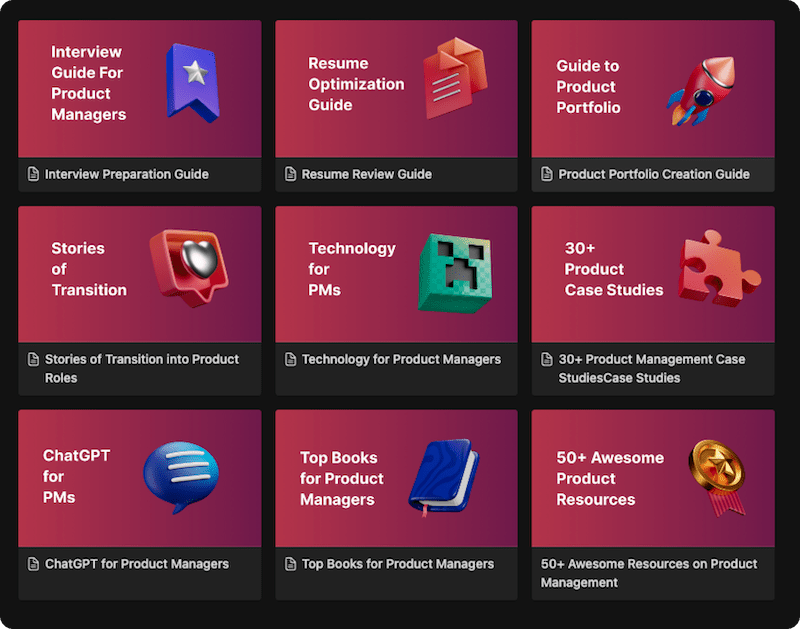Have you ever started a simple home renovation project? The plan is clear: just repaint the kitchen cabinets. But then, as the work begins, someone says, “While we’re at it, let’s just replace the countertop.” Then, “You know, that new countertop makes the old backsplash look dated.” Before you know it, a simple, focused, one-week project has morphed into a massive, three-month, over-budget remodel of the entire first floor. This insidious, step-by-step expansion of a project beyond its original goals is exactly what product teams experience as Feature Creep.
Feature creep is one of the most common and dangerous challenges in product development. It’s the slow, gradual, and often unnoticed process where the scope of a product expands with “just one more little feature” until the original vision is lost in a sea of complexity. It is the process that leads to delayed timelines, blown budgets, and bloated products.
This guide will serve as your blueprint for understanding and preventing this pervasive problem. We will explore what feature creep is, its dangerous consequences, the common causes, and a practical framework for building a strong defense to keep your product focused, on schedule, and aligned with its core purpose.
Definition & Origin
The concept of “creep” has its roots in project management, where “scope creep” has long been identified as a primary reason for project failure. As software development became more complex, the term “feature creep” was adopted to describe the specific type of scope creep related to the product’s functionality. It became a well-known cautionary tale during the 1990s as software projects grew in size and complexity, often resulting in products that were years late, over budget, and overly complicated (a state known as feature bloat).
The Dangers of Feature Creep: Why It’s a Project Killer
Feature creep isn’t just an annoyance; it’s a direct threat to your team, your timeline, and your final product.
- Project Delays and Blown Budgets: This is the most immediate impact. Every new feature added requires additional design, development, and testing time, pushing back release dates and increasing costs.
- Team Burnout and Demotivation: Nothing demoralizes a team faster than constantly changing requirements and a finish line that keeps moving. It leads to frustration, burnout, and a loss of focus.
- A Confusing, Bloated Final Product: Feature creep is the process that leads to feature bloat. The end result is often a product that is complex, difficult to navigate, and lacks a clear, coherent value proposition.
- Diluted Product Strategy: Uncontrolled feature additions can pull the product in multiple directions at once, diluting its strategic focus and making it less effective at solving the core problem for its target audience.
- Increased Technical Debt: Rushing to add unplanned features often leads to cutting corners and writing messy code, which creates technical debt that will slow down future development.
How It Works: A 4-Step Guide to Preventing Feature Creep
Preventing feature creep requires discipline, a strong strategy, and excellent communication. It’s about building a robust process for managing new ideas.
Step 1: Create an Ironclad Product Vision and Roadmap
Your product roadmap is your single most important defense. It must be more than just a list of features; it should be grounded in a clear product vision and tied to specific business objectives (OKRs). This roadmap serves as your constitution. When a new feature request comes in, the first question is always: “Does this directly support our current strategic objectives as outlined on the roadmap?”
Step 2: Establish a Triage Process for All New Ideas
Don’t let new ideas and feature requests disrupt your team’s focus. Create a formal process for capturing, evaluating, and prioritizing them.
- Capture Everything: Create a central, accessible “idea backlog” where anyone (customers, sales, support, etc.) can submit ideas.
- Evaluate Systematically: Use a consistent prioritization framework (like RICE or MoSCoW) to score and rank these ideas based on their potential impact and alignment with your strategy.
- Review on a Cadence: Review the idea backlog periodically (e.g., once a month or once a quarter), not in the middle of a sprint.
Step 3: Master the Art of Saying “No” (or “Not Now”)
A product manager’s most important job is to protect the team’s focus. This often means saying “no” to good ideas that are not the right ideas for right now. A graceful “no” is a critical skill. Always explain the “why” behind your decision, referencing the product roadmap and strategic priorities. Often, the best answer is “That’s a great idea, but it doesn’t align with our current focus. We’ve added it to our backlog to consider for a future planning cycle.”
Step 4: Use Data to Justify Decisions
Base your decisions on evidence, not opinions. When a stakeholder requests a feature, ask for the data that supports the need. Conversely, use product analytics to show which features are (and are not) being used by customers. Data provides an objective foundation for your roadmap and makes it much harder to argue for adding low-impact features.
Mistakes to Avoid: The Causes of Feature Creep
Feature creep is a symptom of underlying issues. Understanding the root causes is key to preventing it.
- A Vague or Non-Existent Product Roadmap: Without a clear plan, there is no basis for saying “no” to anything.
- Pressure from the Sales Team: The classic “If you just build this one feature, I can close this huge deal.” This leads to a product built for a few large clients instead of the broader market.
- Poor Stakeholder Management: Failing to get buy-in on the initial scope from all key stakeholders leads to them trying to add their “pet features” later in the process.
- Gold Plating: The tendency of designers or developers to add their own “cool” enhancements that are not part of the core requirements.
Examples & Case Studies: Feature Creep in Action
Feature creep can happen to any project, large or small.
Consider a startup building a simple mobile app for tracking personal water intake. The initial scope is clear: a user can log the amount of water they drink and see their daily progress. During development, a stakeholder suggests, “What if it also tracked coffee and soda?” Then, another adds, “We should let them track calories, too!” Then, “Let’s add a social feature so they can compete with friends.” The simple, focused app has now “crept” into a complex health and social networking app, delaying its launch by six months and making it confusing for users who just wanted to track their water intake.
In the video game industry, feature creep is a notorious cause of major delays. A game might be planned with a certain number of levels and characters. During development, the team continuously adds “just one more” cool weapon, a new enemy type, or a complex side-quest system. While each addition might be a good idea in isolation, their cumulative effect can lead to years of delays, a ballooning budget, and a game that loses its core focus.
Related Concepts & Comparisons
Feature Creep vs. Scope Creep vs. Feature Bloat
These three terms are closely related but have distinct meanings.
| Term | Definition | Analogy |
| Feature Creep | The process of uncontrolled addition of product features. | The decision to add a breakfast nook during a kitchen renovation. |
| Scope Creep | The process of uncontrolled expansion of the entire project (timeline, budget, requirements). | The kitchen renovation expanding to include the dining room floor. |
| Feature Bloat | The end result of feature creep; a product that is overly complex and difficult to use. | The final, over-budget, and confusing house with a weirdly placed breakfast nook. |
Export to Sheets
In short, feature creep is a specific type of scope creep, and both lead to the negative outcome of feature bloat.
Conclusion
We began by comparing feature creep to a simple home renovation that spirals into a chaotic, all-consuming project. This analogy is powerful because it highlights the insidious nature of the problem: it rarely begins with a single bad decision, but with a series of small, seemingly harmless compromises that accumulate over time.
Preventing feature creep is one of the most defining challenges of product leadership. It is a testament to a team’s discipline and a product manager’s ability to protect the product’s vision against the constant barrage of good ideas. It requires the strategic clarity to define what matters and the courage to defend that focus.
Ultimately, the fight against feature creep is the daily, disciplined work of maintaining integrity-integrity of the product’s purpose, the project’s timeline, and the team’s morale. The most successful products are not the ones that have the most features; they are the ones that have the right features, delivered on time and with quality. Mastering the art of preventing creep is mastering the art of building successful products.
FAQ’s
While it’s almost always a sign of poor project management, not every added feature is bad. If an opportunity arises to add a small, high-impact feature that strongly aligns with the product vision, it can be a smart pivot. The problem is when the additions are uncontrolled, un-prioritized, and not aligned with the strategy.
Scope creep is the broader term for any uncontrolled change to a project’s scope, which could include the timeline, budget, or resources. Feature creep is a specific type of scope creep that deals only with the addition of unplanned product features.
Acknowledge the value of their idea, but frame your response around the strategic trade-offs. Explain that saying “yes” to this new feature would mean delaying the already-planned features that the roadmap is committed to. Ask them to help you prioritize: “That’s a great idea. To build it this quarter, which of our current top-priority items should we push to the next quarter?”
Ultimately, the Product Manager or Project Manager is responsible for protecting the project’s scope. However, it’s a team effort. Engineers and designers can help by providing accurate effort estimates, and leadership can help by respecting the product roadmap and prioritization process.
The first warning sign is often verbal, with phrases like “While you’re in there…” or “Could you just add one small thing?” These are indicators that the project scope is beginning to be treated as flexible, and it’s time for the product manager to reinforce the agreed-upon priorities.
A product roadmap acts as a public, visible agreement on what the team is focused on and, just as importantly, what it is not focused on. It serves as an objective tool that a product manager can use to defend against out-of-scope requests by showing how they don’t align with the current strategic goals.
Learn better with active recall quiz
How well do you know What is Feature Creep? Let’s find out with this quick quiz! (just 10 questions)


